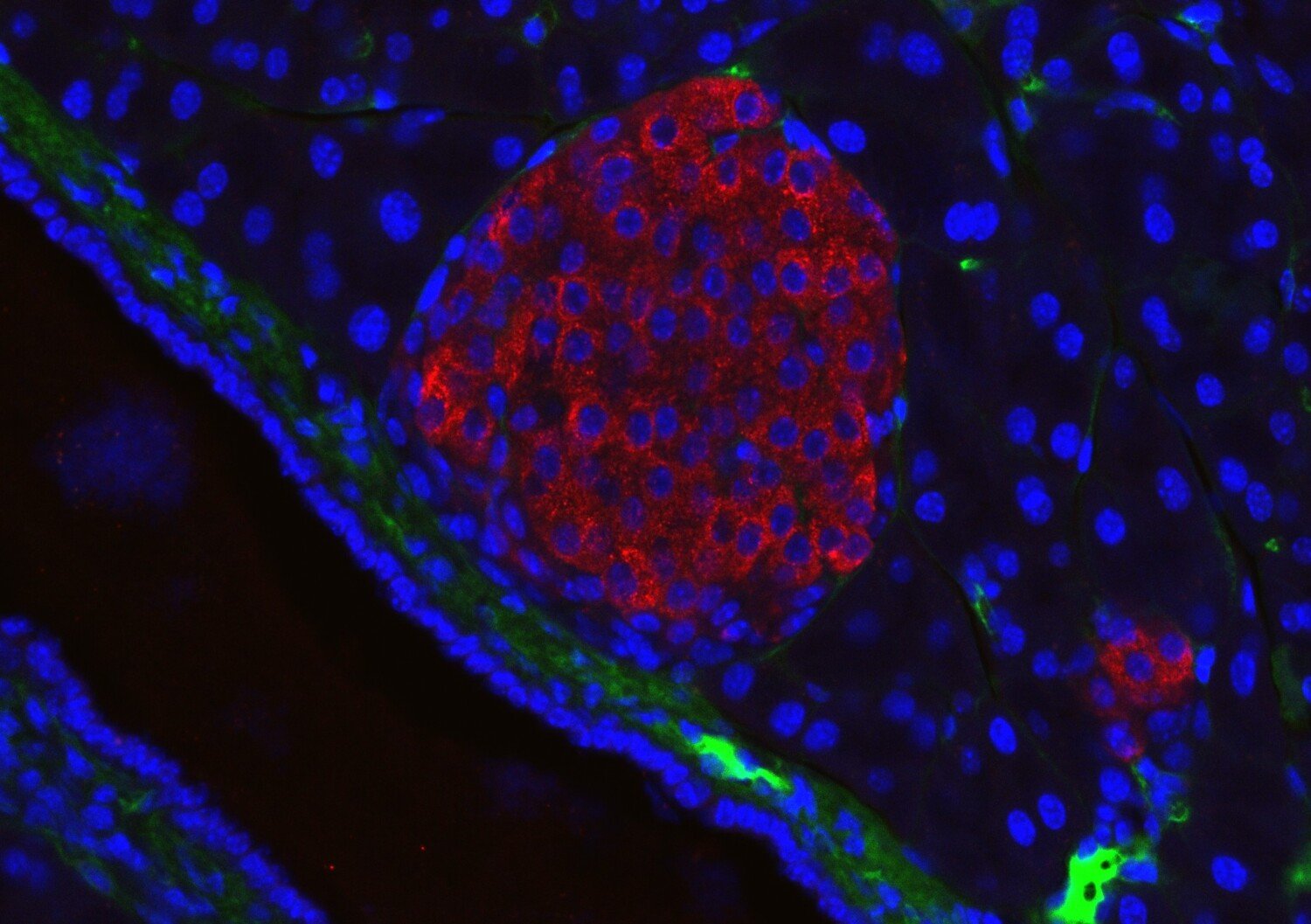A New Window into Pancreatic Islet Cell Function

Researchers at Karolinska Institutet have established a novel transplantation site for islets of Langerhans that enables long-term intravital microscopy of islet physiology in awake mice with exceptional stability.
In a new study, published in Nature Communications, researchers at Karolinska Institutet pioneered the transplantation of pancreatic islets onto the dura mater, the outermost meningeal layer of the brain, allowing minimally invasive, repeated in vivo imaging sessions over months under physiological conditions. By combining a cranial window with an air-cushion carbon-fiber cage and stable head fixation, the researchers were able to repeatedly monitor both mouse and human islet grafts as they became vascularized, integrated, and metabolically active. Furthermore, the method made it possible to track, for the first time, the rhythmic calcium signals in insulin-producing beta cells, an essential readout of insulin secretion, in awake mice.
Pancreatic islets regulate blood sugar, and their dysfunction is central to type 2 diabetes. This new approach provides a unique opportunity to study how islets work, how grafts adapt after transplantation, and how drugs or stressors influence insulin secretion in a physiologically relevant setting.
“Many preclinical studies rely on anesthetized animals, but anesthesia alters how cells respond to stimuli. By eliminating anesthesia, our method increases both accuracy and physiological relevance when studying pancreatic islet behavior. Moreover, the dura mater transplantation site may open doors for research on other tissues beyond pancreatic islets,” says Dr. Philip Tröster, researcher at the Rolf Luft Research Center for Diabetes and Endocrinology, Department of Molecular Medicine and Surgery and first author of the study.
Because this approach allows long-term, repeated observations in the same animal, inter-animal variability is reduced, improving statistical power and potentially accelerating the translation of findings into therapies.

“The stability of this model opens up new opportunities to combine it with advanced imaging techniques, such as super-resolution microscopy and innovative biosensors, to track subcellular events, cell-to-cell heterogeneity, and early disease processes. Studying islets in awake animals also allows us to link the full physiological complexity, from food intake to islet activity, thereby deepening our understanding of diabetes pathophysiology and improving preclinical testing,” says Professor Per-Olof Berggren, the Rolf Luft Research Center for Diabetes and Endocrinology, Department of Molecular Medicine and Surgery, and senior author of the study.
The study was supported by funding from Karolinska Institutet, the European Research Council (ERC) Advanced Grant (2018-AdG 834860 EYELETS), the Family Erling-Persson Foundation, the Jonas & Christina af Jochnick Foundation, the Novo Nordisk Foundation, the Swedish Diabetes Association, the Swedish Foundation for Strategic Research (SSF MED-X 2018), and the Swedish Research Council. Ethical approvals complied with institutional and national guidelines for animal experiments.
Publication
Stable intracranial imaging of dura mater-engrafted pancreatic islet cells in awake mice Tröster, P., Visa, M., Valladolid-Acebes, I. et al. Nat Commun 16, 10047 (2025). doi.org/10.1038/s41467-025-66057-4
